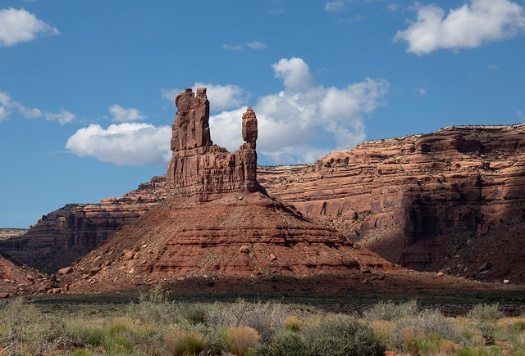
June 13, 2017; Indian Country Today
Tribal officials and their lawyers say U.S. Department of the Interior Secretary Ryan Zinke is misrepresenting tribal positions about his plan to reduce a yet-unknown portion of the Bears Ears National Monument, the first-ever tribal monument designated by a U.S. president, while increasing tribal co-management of the site.
In a press call hosted by the Interior Department, Zinke said, “I’ve met with the tribes, I’ve talked to tribes, and, quite frankly, I think the tribes, most importantly desire co-management [of Bears Ears].” He added that the tribes were “happy” and willing to work with the U.S. government on recommendations to reduce the size of Bears Ears.
Tribal representatives disagree. In a June 12th press call hosted by U.S. Sen. Tom Udall (D-NM), the vice-chair of the Senate Committee on Indian Affairs, Navajo Nation Attorney General Ethel Branch said the tribe’s leaders have “maintained a consistent position that they support the monument designation.”
Branch continued, “If there is any happiness, it’s probably that the monument remains intact as of now.”
Natalie Landreth, an attorney with the Native American Rights Fund who represents the Hopi, Zuni, and Ute Mountain Ute Tribes on Bears Ears issues, said the proclamation that set up Bears Ears as a national monument in late December 2016 had set up a structure wherein five tribes, known as the Bears Ears Inter-Tribal Coalition, work together to co-manage the monument. Landreth said that some of her impacted tribal clients told her that as of Zinke’s announcement, he had not been in touch with them on this matter.
Sign up for our free newsletters
Subscribe to NPQ's newsletters to have our top stories delivered directly to your inbox.
By signing up, you agree to our privacy policy and terms of use, and to receive messages from NPQ and our partners.
Udall agrees that it’s clear to him that Zinke did not properly consult with tribes or the public. Landreth suggests that it’s uncertain what Zinke is proposing exactly, but her “initial reaction on behalf of the three tribes we represent is that this was really a cynical effort to distract Indian country from the devastating blow of reducing the size of the monument.”
Zinke is recommending that part of the 1.35 million acre Bears Ears Monument—an unspecified part at this time—be rescinded. Bears Ears is a pair of mesas and the surrounding land, long held sacred by tribes in this region of Utah. It’s also a hotly contested piece of land, with support for the monument designation and naysayers across the spectrum. Several large funders, including Leonardo DiCaprio, stepped up several months ago to start a community engagement fund to support the monument.
President Trump issued an executive order on April 26th directing Zinke to review monuments designated under the Antiquities Act between January 1996 and April 2017 that are 100,000 acres or more in size. Since then, 150,000 people have offered public comments. The Center for Western Priorities (CWP), a nonpartisan conservation organization, recently compiled comments from Utah residents, who have much at stake regarding the fate of Bears Ears. Of the roughly 1,200 self-identified Utahans who commented, 88 percent recommended preserving the Bears Ears National Monument in its current form.
Some local Utah officials don’t fall in that 88 percent, apparently; San Juan County Commissioner Phil Lyman says his commissioners want to see the new administration do away with the new monument altogether. Lyman agrees with Zinke that the current management framework is too restrictive.
No president has ever rescinded a national monument created by his predecessor, and a recent article in the Virginia Law Review contends that only Congress, not the president, has the legal authority to do so. That may not stop President Trump from trying, but if he does, many lawsuits will probably follow.—Angie Wierzbicki











